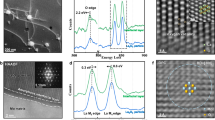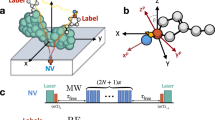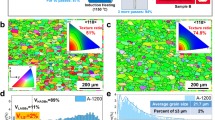Abstract
EXPERIMENTS in which the thermal recovery of neutron irradiated and plastically deformed molybdenum1–3 and tungsten1,4–6 has been followed by measuring changes in electrical resistivity have revealed that in both metals one species of point defect, probably the lattice vacancy, becomes mobile above room temperature. The purpose of this communication is to give a preliminary account of similar experiments on neutron-irradiated niobium and molybdenum and plastically deformed niobium and tantalum.
This is a preview of subscription content, access via your institution
Access options
Subscribe to this journal
Receive 51 print issues and online access
$199.00 per year
only $3.90 per issue
Buy this article
- Purchase on SpringerLink
- Instant access to full article PDF
Prices may be subject to local taxes which are calculated during checkout
Similar content being viewed by others
References
Kinchin, G. H., and Thompson, M. W., J. Nuclear Energy, 6, 275 (1958).
Martin, D. G., Acta Met., 5, 371 (1957).
Peiffer, H. R., J. App. Phys., 29, 1581 (1958).
Thompson, M. W., Phil. Mag., 5, 278 (1960).
Schultz, H., Z. Naturforschung, 14, a, 361 (1959).
Neimark, L. A., and Swalin, R. A., Trans. Amer. Inst. Mech. Eng., 218, 82 (1960).
Author information
Authors and Affiliations
Rights and permissions
About this article
Cite this article
PEACOCK, D., JOHNSON, A. Point Defects in Niobium, Molybdenum and Tantalum. Nature 195, 169 (1962). https://doi.org/10.1038/195169a0
Issue date:
DOI: https://doi.org/10.1038/195169a0
This article is cited by
-
The influence of interstitial impurity atoms on the recovery behaviour of cold-worked vanadium
Journal of Materials Science (1967)



